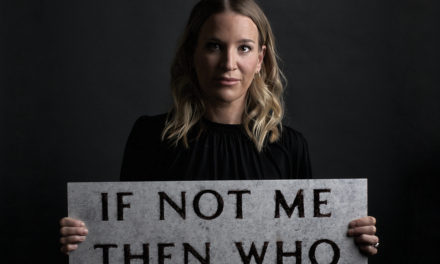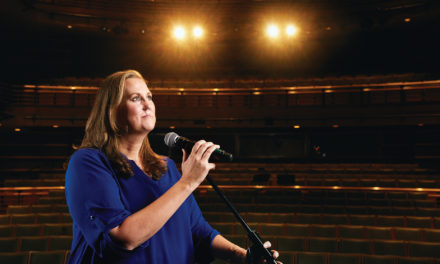I’m pretty sure that if my wife ever came face to face with a Comcast customer service representative, there’d be blood. It was her idea to drop our cable, partly out of spite, but mostly because our monthly bill was trumped only by the mortgage payment. Still, I dragged the decision out for months. What about sports?
Then she came to me one morning and said she’d bought a pair of Amazon Fire TV boxes, one for the living room and another for the bedroom, and subscribed to Sling TV, which streams ESPN. If there was a mic anywhere in the house, she would have dropped it from about eye-level at that moment and walked out of the kitchen with complete confidence that I had no recourse.
Truth be told, I’ve been too busy binge-watching “Mozart in the Jungle,” “Bloodline,” and “Orange is the New Black” to realize I haven’t so much as watched five minutes of “SportsCenter” in the last three months. In that time, we’ve also become the envy of our friends, who fantasize incessantly about quitting cable and Facebook (that’s another story), but can’t bring themselves to believe that it’s physically possible. It is. And here’s how.
Begin with the box
Before you stream anything, you need a device to do it. Amazon Fire TV ($100) is hardly the only one—PlayStation and Xbox were doing it long before Amazon, Apple and Google entered the equation—but it is the best supported, especially for Prime members, who gain free access to Amazon’s impressive library of shows and movies. Since we were motivated in large part by cutting our costs, a deal offered by Sling TV (which is still being offered) was our deciding factor: Sign up for three months and get 50 bucks off Amazon Fire TV. (Note: All of these devices are capable of working in conjunction with cable.)
Then start subscribing
Much as she hated to admit it, my wife’s FOMO on the Food Network, HGTV, and TNT (she’s a “Law & Order”-holic) kept us tethered to cable as much as my fear of a prime time without ESPN. So, in no small way, Sling TV was the catalyst for finally converting ours to an all-streaming household. For 20 bucks a month, Sling live-streams those channels and about 60 others, including Travel Channel, IFC, History channel, and CNN.
Hulu ($8) covers just about every other basic-cable show (along with a lot of the network ones) that Sling doesn’t reach—“Real Housewives,” “Modern Family,” “Tosh.O,” “General Hospital.” The catch with Hulu is that some series post as soon as new episodes air and others upload a season at a time, after it airs, so some patience may be required, as well as a good bit of dodging. At the moment, no one is allowed to discuss the latest seasons of “Top Chef” or “Empire” around us.
Netflix has a respectable library of past and present shows, including “Breaking Bad,” “Mad Men” and “Lost,” but you’re subscribing, foremost, for the original content—“House of Cards,” “Orange is the New Black,” “Unbreakable Kimmy Schmidt.” And now that Netflix has started dabbling in movies, too, 11 bucks a month seems like the best bargain on TV. (Which can only mean it won’t last.)
Catching up on what we’d been missing out on with Netflix has taken priority over most of our old viewing habits (and a few family gatherings), but it was HBO and SHOWTIME that sustained us over the last few years. (Thus, the massive cable bill.) So our arsenal wouldn’t be complete without their streaming apps—HBO NOW runs $15 a month, SHOWTIME, $9—both of which make available their entire archives.
But not all at once
Here’s the harsh reality: You can only watch so much TV. We were TV addicts when all we had at our disposal was a handful of B-grade cable shows and a couple episodes a week from HBO and SHOWTIME. As soon as we started scanning Amazon and Netflix, it was sensory overload. Literally. I never slept that night; I was too wired.
In the best-case scenario (in which you deprive yourself of only a couple hours of sleep a night and call out of work once a week), it’s going to take you a solid three to four months to put a dent in the new stuff. So, subscribe to all of the aforementioned apps—that’s nonnegotiable; you’re looking at a monthly cost of less than $65—but not all at once. Netflix, HBO NOW, and SHOWTIME offer month-long free trials, and Hulu let’s you sample it for a week. Don’t let them go to waste because it’s more TV than you can handle. We started with Sling, Netflix, and Hulu. Three months later, we still haven’t found the time for HBO and SHOWTIME, but we’re starting to miss them. Really, you could get away with watching at full capacity for several months before you’re paying that $65.
What you can’t stream
A lot of network shows, as I mentioned, are scattered across Hulu, Netflix, and Amazon, but not all of them. Chances are, you won’t miss the networks at all—until one of those increasingly-rare must-see events rolls around, like the Super Bowl, or the Olympics or “Big Brother.” CBS has its own subscription-based streaming app, which would, at least, solve our “Big Brother” problem. The others have streaming apps too, but they’re dependent upon cable service.
Enter the HD antenna. This is not that giant lightning rod your dad almost fell of the roof installing. These are discreet-looking models that connect directly to your TV, run less than $50 and, unless you live in a deep valley, should be able to pull in all the local network channels at HD-quality. Amazon even started offering a Fire TV-HD antenna bundle ($110), apparently sensing this is where we’re headed. I know it seems weird to tune in to the TV itself to produce, well, TV, but it’s a small concession in the name of reclaiming your independence.










